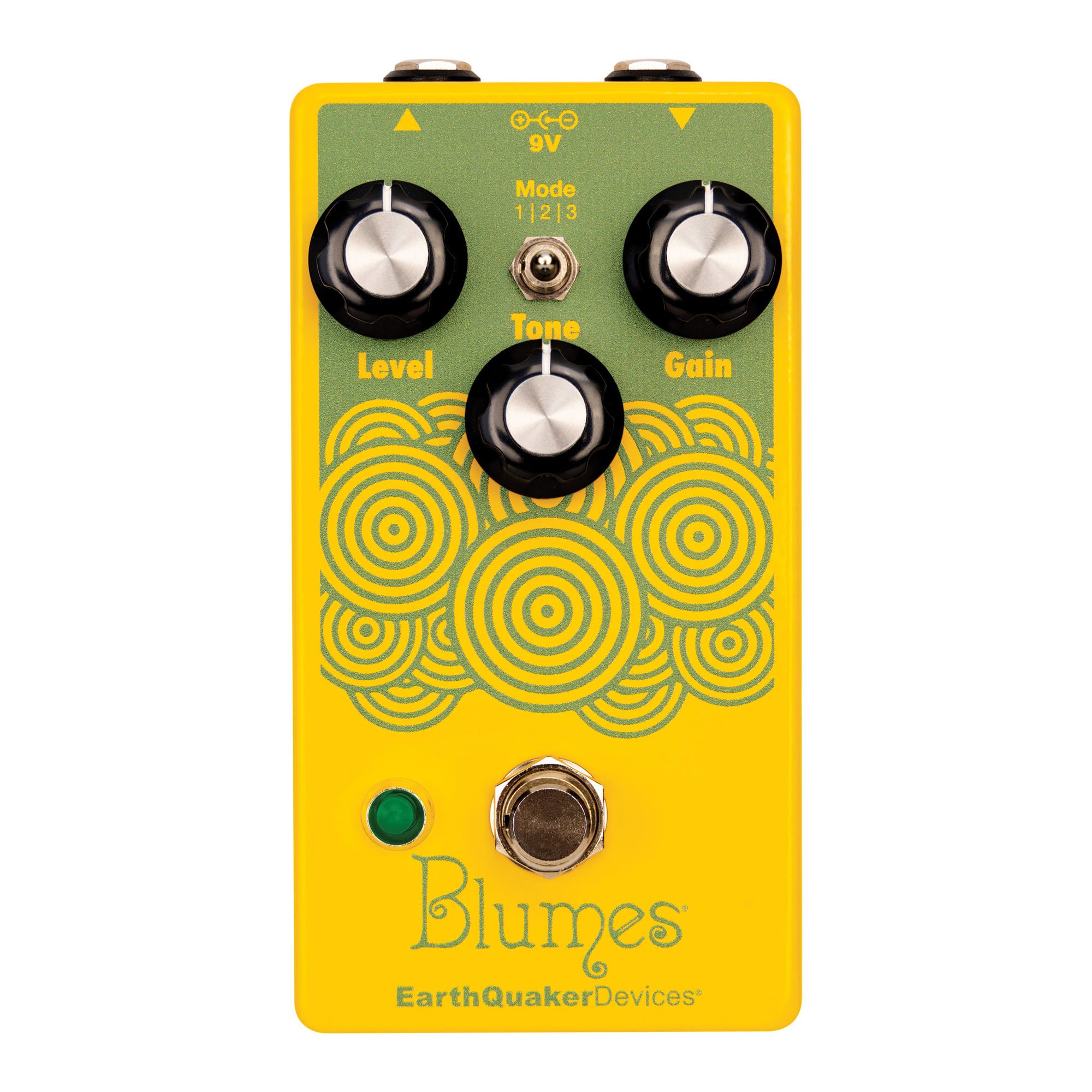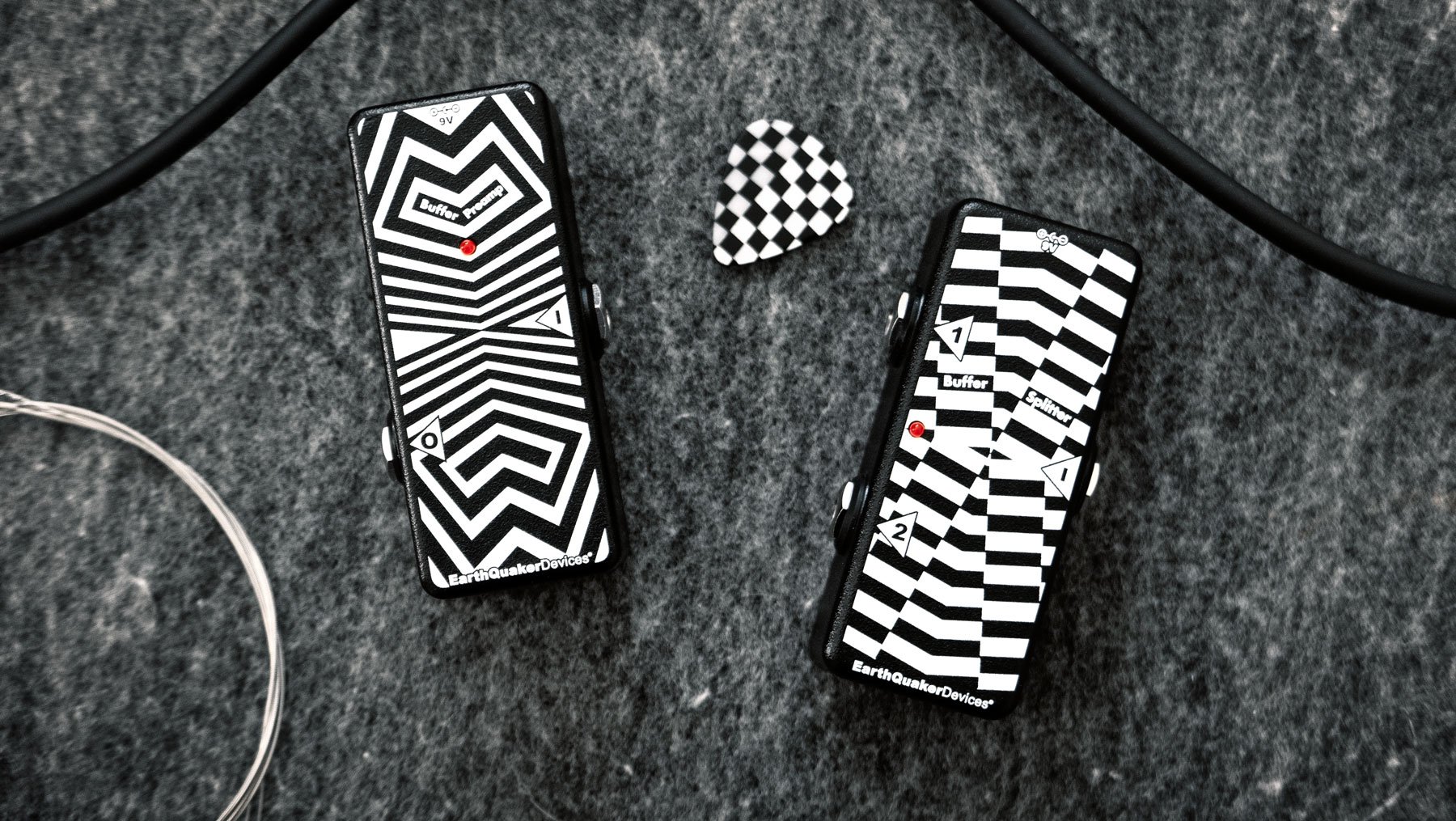6 Classic Bass Tones from the Blumes Overdrive Pedal
Dan Epstein
A few months back, an old bass-playing pal of mine hit me up for some pedal advice. A wrist injury had forced him to shelve his Fender Jazz in favor of a short-scale Guild hollowbody; and while he dug the feel and sound of the Guild, he also wanted to “add some gusto” to it. He told me he was thinking of buying an octave pedal, and could I recommend one?
Knowing his playing style and the kind of music he’s currently performing — he’s holding down the low end in a ‘90s Brit Pop cover band — I admit that I did an involuntary face-palm at his mention of an octave pedal. But I couldn’t blame him for instinctively heading in the wrong direction; back in the ‘80s, when we were both coming up as musicians and playing in a band together, nobody talked about pedals for rock bassists, who typically weren’t encouraged to explore any sonic or tonal options beyond what they could achieve between their instrument and amplifier. I remember the time my friend tried using a distortion pedal for a “fuzz bass” effect at one of our gigs; it sounded cool — but it also completely removed all bottom end from his (and our) sound. And since neither of us were aware of any better bass effect options in those days, he simply ditched the distortion and moved on.
In recent years, the array of pedal options for guitarists has since exploded to a degree that was unimaginable even a decade ago; ditto for the array of resources and forums that can teach guitarists about which pedals do what, and which ones might be right for them. But bassists have remained relatively underserved on this score, which is why many of them have turned to guitar overdrive pedals — such as the EarthQuaker Devices’ Plumes Small Signal Shredder — to punch up their sound, and which is why I recommended that my friend do the same. But I wish he’d asked me the same question just a few months later, because then I’d have had a better answer for him: Get yourself a Blumes, baby!
Much like the Plumes, the Blumes Low Signal Shredder is an all-analog overdrive that offers three different clipping options for your tone-sculpting, face-melting needs. Blumes, however, features a circuit that’s designed specifically to enhance the deep-end frequencies purveyed by the bass. (Sure, it sounds fantastic with down-tuned guitars, as well — but let’s give the bassists their moment in the sun, shall we?)
With its three control knobs (Level, Tone and Gain) and three-mode toggle switch, Blumes can add all manner of flavors to your bass sound. It can deliver serious crunch, fuzz and full-on, bowel-disturbing distortion, but it can also work for you on a much more subtle level. Think of Blumes as a variety pack of sonic hot sauces: some of the settings will make things a little tastier, some will give you a nice burn, and others will make your eyes involuntarily bug right out of your head. Here are six that’ll give you a sense of what Blumes is capable of.
(Note: your own results may vary slightly depending on your setup. Blumes can drive the hell out of any tube amp you pair it with; but I found the following settings while recording with my P-Bass through a direct box for a truly neutral “playing field”.)
OLD SCHOOL
Looking to cop some sweet late-sixties/early-seventies rock and soul tones — you know, the ones with a ton of supple analog warmth and just a touch of hair? “Come Together” with Blumes’ Mode 1, which utilizes a pair of light emitting diodes to produce symmetrical LED clipping that’ll give you some serious high-output crunch when you crank the Gain. Only, don’t crank the Gain; instead, dial it and the Tone control all the way down to 7 o’clock, set the Level between 11 o’clock and noon. Open your pickups all the way up, and set the Tone knob on your bass at about the halfway point, and your bandmates will be asking you that time-honored question, “What’s Going On?”
PUNK’S NOT DEAD
But if you really want to hear the kind of mosh-pit-roiling roar that Blumes is capable of unleashing in Mode 1, set the Level to noon, and the Tone and Gain controls to around 2 o’clock. The crunchy attack produced by this setting is brutal as all hell, yet still articulate enough to distinguish between driving single-note runs and slamming chords. And if the only card you need is the Ace of Spades, play this setting with your bridge pickup and bass tone cranked all the way up for maximum visceral, head-motoring power.
CLEAN BOOST
Let’s say you already have a killer bass tone but need it to cut through the mix a little more, or just want to drive your amp a little harder without sending it into full-on distortion territory. Set the toggle switch to Mode 2, which engages Blumes’ OpAmp drive without bringing the clipping diodes of Modes 1 and 3 into it, resulting in both the pedal’s loudest output and its fullest tonal frequency response. Then set the Level at 11 o’clock, the Tone at Noon (tweak as needed for added bite or warmth), and the Gain all the way down to 7 o’clock. This will give you a nice, full-bodied boost that’s just the ticket for bass solos, funky slapping, plucking with your fingers, or picking out high-register Peter Hook-style drones.
SHOEGAZIN’
It can be tough to be a bass player in a shoegaze-oriented band — you need to anchor the music as well as provide the melodic counterpoint, but it’s all too easy for your playing to get lost in the swirling guitar firestorms. Happily, Blumes can sort you out. Just put the pedal in Mode 2 for maximum full-range output, then set the Level around Noon, and dial both the Tone and Gain to around 1 o’clock. This setting will let your tone cut through the maelstrom, while also adding some deliciously flammable material of your own to the mix.
FUZZ GROOVE
Fuzz can be a tremendously cool effect to add to your bass arsenal; but as mentioned above, it can be difficult to dial in a fuzz bass tone that’s actually still really bass-y. If it’s fuzz nirvana you seek, proceed directly to Blumes’ Mode 3 — the asymmetrical silicon diode arrangement of this mode delivers a fuzzy, compressed tone with a really warm low end. With the tone knob on your bass turned all the way down, crank the Level of Blumes to 1 o’clock, and position both the Tone and Gain knobs to around 10 o’clock. The resulting fuzz is something you can get funky and fluid with, like the one used in that nasty bass line from Curtis Mayfield’s “(Don’t Worry) If There’s Hell Below, We’re All Going to Go)”. And if you’re looking for a fuzz that’s a little more doom-oriented (but will still totally cut through the mix onstage) just turn the Tone and Gain knobs up a few notches each to find that Sabbath-y sweet spot.
NOISE ASSAULT
Okay, look — we’re not saying that you should use Blumes to totally dominate the stage and completely drench your band in insane (yet still remarkably articulate) distortion. But should the opportunity somehow present itself, just know that this pedal can totally rise to the occasion. With Blumes in Mode 3, dial the Level to 1 o’clock, then crank both the Tone and Gain all the way up to 5 o’clock. Make sure to have the tone knob on your bass turned all the way up; this will allow your individual notes to ring out with some clarity, even with the massive amount of dirt that they’re hauling. It will also really bring out the top-end sizzle of this setting, which can at times make you think that you’re playing a glitchy old bass synth. But if you choose to crank the Level even higher, please be aware that EarthQuaker Devices assumes no legal responsibility for any cabinet speakers (or audience heads) you may explode as a result.
Check out a deep dive into the Blumes Low Signal Shredder.
Dan Epstein is an author, editor, journalist and guitarist based in New York's Hudson Valley. He writes about his latest musical obsessions at Jagged Time Lapse, and songs from his latest musical project The Corinthian Columns can be found at corinthiancolumns.bandcamp.com












